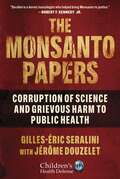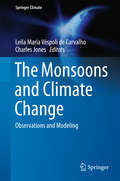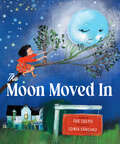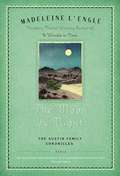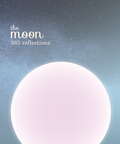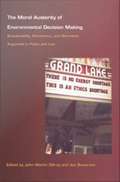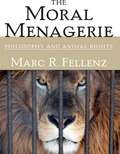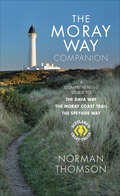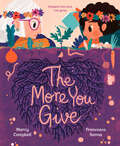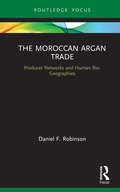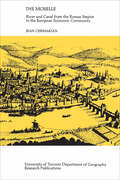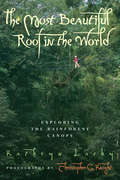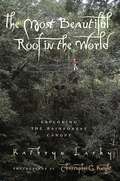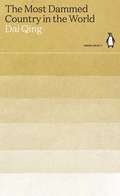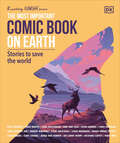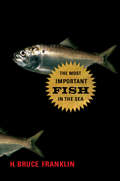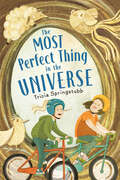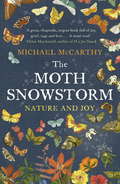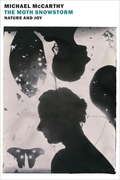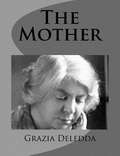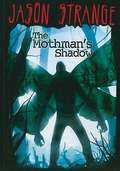- Table View
- List View
The Monsanto Papers: Corruption of Science and Grievous Harm to Public Health (Children’s Health Defense)
by Gilles-Éric Seralini Jérôme DouzeletA David and Goliath battle for truth A specialist in GM foods and pesticides, the biologist Gilles-Éric Seralini has studied their toxicity and effects on people's health for many years. In September 2012, for the first time in a major scientific journal (Food and Chemical Toxicology), he published a study showing the effect on the liver and kidneys of two of Monsanto's flagship products: Roundup weedkiller and the GM foods created to absorb it. Images from the study of tumor-ridden rats fed with GM foods and Roundup went viral. The study was a PR disaster for Monsanto. The multinational soon bounced back and did everything in its power to cover up the study—leaning on the publishers to retract the findings. Monsanto began a series of smear campaigns to discredit Seralini and fellow researchers and intimidate their supporters, while pumping out their own collection of fake research findings and testimonies. These practices were met with huge suspicion, but there was no concrete evidence until, in 2017, Monsanto was ordered to publish tens of thousands of confidential documents in a class-action lawsuit presented by thousands of individuals afflicted with serious illnesses from their use of Roundup. The "Monsanto Papers" that were produced subsequently proved the company&’s cynical attempts at a cover-up as well as its fraudulent practices. Gilles-Éric Seralini and Jérôme Douzelet delved into the documents and discovered how, in the pursuit of its own short term economic interests, Monsanto used sophisticated methods of deceit to bypass legislation devised to protect millions of people. Seralini and Douzelet discovered how Monsanto managed to provide phony assessments to conceal the poisons its products contain, thus deceiving the public authorities and the scientific and medical communities.
The Monsoons and Climate Change
by Charles Jones Leila Maria Véspoli CarvalhoThis book presents a global overview examining monsoon variability in South Asia, Australian, South America and North American, as well as a focus on glaciers and monsoon systems. Monsoon systems are important components of the Earth's climate and play fundamental roles in water and energy balances. The variability and changes in the monsoons affect millions of people and the economies of many countries. This book presents the physical mechanisms involved with monsoon systems, including recent modeling advances addressing climate changes and future projections. The Monsoons and Climate Change will be of interest to both graduate students and researchers.
The Moon Moved In
by Sue SoltisTHREE STARRED REVIEWS What would happen if the moon moved in next door? A funny and original story about an unexpected friendship, the essential role of the moon, and our power to connect, even from far away. “Perfectly captures the curiosity and delight of a child’s mind. Adults could learn a thing or two.”—Aaron Becker, author-illustrator of Caldecott Honor–winning picture book JourneyWhen the Moon moves into the long-empty house next door, all the rooms fill up with light—and Stella finally has a friend. But without the Moon in orbit, the world is going topsy-turvy. The tides stop, and the Earth has a new wobble. Stella worries, but the Moon just wants to stay and garden. Can Stella convince the Moon that life on Earth needs the Moon back in orbit? And what will become of her wish for a friend next door?EDUCATIONAL AND HEARTWARMING: This deeply felt story of an unusual friendship also celebrates the Moon’s role in the natural workings of the world. Fun facts about the moon's impact on our planet’s environment, animals, and humans are included at the front and back of the book! PRIORITIZING THE PLANET: Stella realizes that even though she loves having her friend close, the consequences are too significant. She learns to prioritize her planet over herself, supporting Moon in returning to his place in the sky and resuming his role. But she also learns that Moon is never far away! ENGAGEMENT WITH THE WORLD: This clever moon book for kids features a scientifically minded female protagonist who loves the Earth’s smallest creatures, is concerned for everyone’s well-being, and is interested in space. BEAUTIFUL, INSPIRING GIFT: Perfect for future scientists, aspiring astronomers, moon lovers, bug lovers, and budding gardeners—as well as anyone looking for a new friend. Perfect for: Anyone who loves the moon Kids who enjoy science facts and learning about the environment Parents and educators looking for picture books with astronomical or STEM themes Readers interested in stories with strong themes of friendship and social-emotional learning
The Moon by Night (Austin Family Chronicles #2)
by Madeleine L'EngleVicky Austin, almost 15, tells about her family's summer cross-country camping trip. From the Austin series. During this camping trip, Vicky tries to come to terms with her feelings about life, God, boys, and the possibility of starting school in New York City in the fall.
The Moon of the Wild Pigs (Thirteen Moons)
by Jean Craighead GeorgeDescribes animal and plant life in the drought-parched desert during the month of July and how a little wild pig adapts to this environment. Includes image descriptions.
The Moon: 365 reflections
by PyramidThroughout history, legend and myth, the Moon has symbolized immortality and eternity, enlightenment and adventure and has inspired poets, philosophers, astronomers and artists. Reflections upon the Moon from literature, philosophy, science and ancient wisdom are gathered together in this enchanting collection.
The Moral Austerity of Environmental Decision Making: Sustainability, Democracy, and Normative Argument in Policy and Law
by John Martin Gillroy Joe BowersoxIn The Moral Austerity of Environmental Decision Making a group of prominent environmental ethicists, policy analysts, political theorists, and legal experts challenges the dominating influence of market principles and assumptions on the formulation of environmental policy. Emphasizing the concept of sustainability and the centrality of moral deliberation to democracy, they examine the possibilities for a wider variety of moral principles to play an active role in defining "good" environmental decisions. If environmental policy is to be responsible to humanity and to nature in the twenty-first century, they argue, it is imperative that the discourse acknowledge and integrate additional normative assumptions and principles other than those endorsed by the market paradigm. The contributors search for these assumptions and principles in short arguments and debates over the role of science, social justice, instrumental value, and intrinsic value in contemporary environmental policy. In their discussion of moral alternatives to enrich environmental decision making and in their search for a less austere and more robust role for normative discourse in practical policy making, they analyze a series of original case studies that deal with environmental sustainability and natural resources policy including pollution, land use, environmental law, globalism, and public lands. The unique structure of the book--which features the core contributors responding in a discourse format to the central chapters' essays and debates--helps to highlight the role personal and public values play in democratic decision making generally and in the field of environmental politics specifically. Contributors. Joe Bowersox, David Brower, Susan Buck, Celia Campbell-Mohn, John Martin Gillroy, Joel Kassiola, Jan Laitos, William Lowry, Bryan Norton, Robert Paehlke, Barry G. Rabe, Mark Sagoff, Anna K. Schwab, Bob Pepperman Taylor, Jonathan Wiener
The Moral Challenge of Dangerous Climate Change
by Darrel MoellendorfThis book examines the threat that climate change poses to the projects of poverty eradication, sustainable development, and biodiversity preservation. It offers a careful discussion of the values that support these projects and a critical evaluation of the normative bases of climate change policy. This book regards climate change policy as a public problem that normative philosophy can shed light on. It assumes that the development of policy should be based on values regarding what is important to respect, preserve, and protect. What sort of climate change policy do we owe the poor of the world who are particularly vulnerable to climate change? Why should our generation take on the burden of mitigating climate change that is caused, in no small part, by emissions from people now dead? What value is lost when natural species go extinct, as they may well do en masse because of climate change? This book presents a broad and inclusive discussion of climate change policy, relevant to those with interests in public policy, development studies, environmental studies, political theory, and moral and political philosophy.
The Moral Menagerie: Philosophy and Animal Rights
by Marc R. FellenzThe Moral Menagerie offers a broad philosophical analysis of the recent debate over animal rights. Marc Fellenz locates the debate in its historical and social contexts, traces its roots in the history of Western philosophy, and analyzes the most important arguments that have been offered on both sides. Fellenz argues that the debate has been philosophically valuable for focusing attention on fundamental problems in ethics and other areas of philosophy, and for raising issues of concern to both Anglo-American and continental thinkers. More provocatively, he also argues that the form the debate often takes--attempting to extend our traditional human-centered moral categories to cover other animals--is ultimately inadequate. Making use of the critical perspectives found in environmentalism, feminism and post-modernism, he concludes that taking animals seriously requires a more radical reassessment our moral framework than the concept of 'animal rights' implies.
The Moray Way Companion: A Comprehensive Guide to The Dava Way, The Moray Coast Trail and the Speyside Way
by Norman ThomsonThe Moray Way consists of all or part of three previously existing routes: the Moray Coast Trail, the Speyside Way and the Dava Way. Together they cover a huge and varied range of landscapes.This book is the ideal guide to much of what this beautiful and richly historical part of Scotland has to offer. The largest town, Forres, is an ancient royal burgh. Between it and the next biggest town of Lossiemouth lie the coastal villages of Findhorn, Burghead and Hopeman, connected by some of Scotland’s finest coastal scenery and beaches. Eastwards, beyond intact remains of second world war defences, lie Garmouth and Fochabers, the former, many centuries ago, the main port of Moray Here the Moray Way turns south, following a course through the fertile Spey valley. Its many distilleries are part of the considerable variety of interest as the route continues to the resort town of Grantown. A final stage northward crosses the wild openness of Dava Moor, reaching eventually the spectacular Divie viaduct where there is a dramatic change to gentler woodlands and pastoral landscapes as the trail leads back to Forres.
The More You Give
by Marcy CampbellA modern-day response to The Giving Tree, this lyrical picturebook shows how a family passes down love from generation to generation, leaving a legacy of growing both trees and community.Once there was a wide-open field, and a boy who loved his grandmother, who loved him back. The boy&’s grandmother gives him many gifts, like hugs, and Sunday morning pancakes, and acorns with wild and woolly caps. And all her wisdom about how things grow. As the boy becomes a father, he gives his daughter bedtime stories his grandmother told him, and piggyback rides. He gives her acorns, and the wisdom he learned about how things grow. His daughter continues the chain, then passing down gifts of her own. Here is a picture book about the legacy of love that comes when we nurture living things—be they people or trees.
The Moroccan Argan Trade: Producer Networks and Human Bio-Geographies (Earthscan Studies in Natural Resource Management)
by Daniel F. RobinsonThis book provides one of the most detailed and comprehensive examinations of the Moroccan argan tree, the products derived from it and its cultural significance. The Moroccan argan trade is booming, but as the tree provides important ecological functions and plays an important role, both financially and culturally, for the Amazigh (Berber) people it has become a key topic of debate. This book thoroughly examines the production stories, benefits and impacts and provides a value-chain analysis which compares different cooperatives and approaches to production. It assesses the fair-trade approaches and attempts at sustainable production of the bio-trade resource. While being a vital source of income, the argan tree has a significant cultural importance to the Indigenous people and the book assesses the impact of the argan trade on their well-being, community and livelihoods. It examines Indigenous knowledge and intellectual property issues relating to the trade, as well as Berber-state law and politics. Assessing factors relating to legal and economic geography international trade, socio-cultural and human-nature relationships, the book provides a comprehensive analysis of the argan tree which will appeal to students, scholars and practitioners.
The Moselle: River and Canal from the Roman Empire to the European Economic Community
by Jean CermakianThe Moselle has been one of the main arteries of European Communication and transportation for centuries. The Romans used it as a main thoroughfare from southern to northern Europe and also began the improvements to its navigation that have continued intermittently through the industrial revolution to the present day. Professor Cermakian focuses on the historical, political, and geographical factors in the use and canalization of this international river – a focus that is derived from his interest in the details of standardizing transport networks and policy as an important part of 'European integration,' which he sees both as a long historical movement and as a present endeavour under EEC. The book offers a history of the political economy of an important river, a symbol for many of the spirit of Europe.(University of Toronto Department of Geography Research Publications 14)
The Most Beautiful Roof in the World: Exploring the Rainforest Canopy
by Kathryn Lasky Christopher G. KnightFrom Newbery Honor author Kathryn Lasky comes a fascinating journey through the rainforest canopy that's perfect for budding environmentalists. Journey along with Dr. Meg Lowman, a scientist who, with the help of slings, suspended walkways, and mountain-climbing equipment, has managed to ascend into one of our planet’s least accessible and most fascinating ecosystems.
The Most Beautiful Roof in the World: Exploring the Rainforest Canopy
by Kathryn LaskyJourney along with Dr. Meg Lowman, a scientist who, with the help of slings, suspended walkways, and mountain-climbing equipment, has managed to ascend into one of our planet’s least accessible and most fascinating ecosystems--the rain-forest canopy. “Fresh in outlook and intriguing in details, this book will strengthen any library collection on the rainforest. ”--Booklist
The Most Dammed Country in the World (Green Ideas)
by Dai QingIn twenty short books, Penguin brings you the classics of the environmental movement.The courageous, unflinching speeches and writings collected in The Most Dammed Country in the World detail the devastating human and environmental cost of China's economic rise.Over the past 75 years, a new canon has emerged. As life on Earth has become irrevocably altered by humans, visionary thinkers around the world have raised their voices to defend the planet, and affirm our place at the heart of its restoration. Their words have endured through the decades, becoming the classics of a movement. Together, these books show the richness of environmental thought, and point the way to a fairer, saner, greener world.
The Most Important Comic Book on Earth: Stories to Save the World
by Jane Goodall Scott Snyder Cara Delevingne Ricky Gervais Taika Waititi120 inspiring visual stories on environmentalism from key figures, charities, activists, and artists. The Most Important Comic Book On Earth is a global collaboration for planetary change, bringing together a diverse team of 300 leading environmentalists, artists, authors, actors, filmmakers, musicians, and more to present over 120 stories to save the world. Whether it&’s inspirational tales from celebrity names such as Cara Delevingne and Andy Serkis, hilarious webcomics from War and Peas and Ricky Gervais, artworks by leading illustrators David Mack and Tula Lotay, calls to action from activists George Monbiot and Jane Goodall, or powerful stories by Brian Azzarello and Amy Chu, each of the comics in this anthology will support projects and organizations fighting to save the planet and Rewrite Extinction.
The Most Important Fish in the Sea: Menhaden and America
by H. Bruce FranklinIn this brilliant portrait of the oceans' unlikely hero, H. Bruce Franklin shows how menhaden have shaped America's national--and natural--history, and why reckless overfishing now threatens their place in both. Since Native Americans began using menhaden as fertilizer, this amazing fish has greased the wheels of U.S. agriculture and industry. By the mid-1870s, menhaden had replaced whales as a principal source of industrial lubricant, with hundreds of ships and dozens of factories along the eastern seaboard working feverishly to produce fish oil. Since the Civil War, menhaden have provided the largest catch of any American fishery. Today, one company--Omega Protein--has a monopoly on the menhaden "reduction industry." Every year it sweeps billions of fish from the sea, grinds them up, and turns them into animal feed, fertilizer, and oil used in everything from linoleum to health-food supplements. The massive harvest wouldn't be such a problem if menhaden were only good for making lipstick and soap. But they are crucial to the diet of bigger fish and they filter the waters of the Atlantic and Gulf coasts, playing an essential dual role in marine ecology perhaps unmatched anywhere on the planet. As their numbers have plummeted, fish and birds dependent on them have been decimatedand toxic algae have begun to choke our bays and seas. In Franklin's vibrant prose, the decline of a once ubiquitous fish becomes an adventure story, an exploration of the U.S. political economy, a groundbreaking history of America's emerging ecological consciousness, and an inspiring vision of a growing alliance between environmentalists and recreational anglers.
The Most Perfect Thing in the Universe
by Tricia SpringstubbFor fans of Shouting at the Rain by Lynda Mullaly and The Adventures of a Girl Called Bicycle by Christina Uss, a novel about one unadventurous girl who discovers she is anything but.Eleven-year-old Loah Londonderry is definitely a homebody. While her mother, a noted ornithologist, works to save the endangered birds of the shrinking Arctic tundra, Loah anxiously counts the days till her return home. But then, to Loah's surprise and dismay, Dr. Londonderry decides to set off on a perilous solo quest to find the Loah bird, long believed extinct. Does her mother care more deeply about Loah the bird than Loah her daughter? Things get worse yet when Loah's elderly caretakers fall ill and she finds herself all alone except for her friend Ellis. Ellis has big problems of her own, but she believes in Loah. She's certain Loah has strengths that are hidden yet wonderful, like the golden feather tucked away on her namesake bird's wing. When Dr. Londonderry's expedition goes terribly wrong, Loah needs to discover for herself whether she has the courage and heart to find help for her mother, lost at the top of the world. Beautifully written, The Most Perfect Thing in the Universe is about expeditions big and small, about creatures who defy gravity and those of us who are bound by it. A Junior Library Guild Gold Standard Selection
The Moth Snowstorm: Nature and Joy
by Michael McCarthyA great, rhapsodic, urgent book full of joy, grief, rage and love . . . A must-read' Helen Macdonald, author of H is for HawkNature has many gifts for us, but perhaps the greatest of them all is joy; the intense delight we can take in the natural world, in its beauty, in the wonder it can offer us, in the peace it can provide - feelings stemming ultimately from our own unbreakable links to nature, which mean that we cannot be fully human if we are separate from it. In The Moth Snowstorm Michael McCarthy, one of Britain's leading writers on the environment, proposes this joy as a defence of a natural world which is ever more threatened, and which, he argues, is inadequately served by the two defences put forward hitherto: sustainable development and the recognition of ecosystem services.Drawing on a wealth of memorable experiences from a lifetime of watching and thinking about wildlife and natural landscapes, The Moth Snowstorm not only presents a new way of looking at the world around us, but effortlessly blends with it a remarkable and moving memoir of childhood trauma from which love of the natural world emerged. It is a powerful, timely, and wholly original book which comes at a time when nature has never needed it more.
The Moth Snowstorm: Nature and Joy
by Michael McCarthyA great, rhapsodic, urgent book full of joy, grief, rage and love . . . A must-read' Helen Macdonald, author of H is for HawkNature has many gifts for us, but perhaps the greatest of them all is joy; the intense delight we can take in the natural world, in its beauty, in the wonder it can offer us, in the peace it can provide - feelings stemming ultimately from our own unbreakable links to nature, which mean that we cannot be fully human if we are separate from it. In The Moth Snowstorm Michael McCarthy, one of Britain's leading writers on the environment, proposes this joy as a defence of a natural world which is ever more threatened, and which, he argues, is inadequately served by the two defences put forward hitherto: sustainable development and the recognition of ecosystem services.Drawing on a wealth of memorable experiences from a lifetime of watching and thinking about wildlife and natural landscapes, The Moth Snowstorm not only presents a new way of looking at the world around us, but effortlessly blends with it a remarkable and moving memoir of childhood trauma from which love of the natural world emerged. It is a powerful, timely, and wholly original book which comes at a time when nature has never needed it more.
The Moth Snowstorm: Nature and Joy
by Michael MccarthyThe moth snowstorm, a phenomenon Michael McCarthy remembers from his boyhood when moths "would pack a car's headlight beams like snowflakes in a blizzard," is a distant memory. Wildlife is being lost, not only in the wholesale extinctions of species but also in the dwindling of those species that still exist.The Moth Snowstorm is unlike any other book about climate change today; combining the personal with the polemical, it is a manifesto rooted in experience, a poignant memoir of the author's first love: nature. McCarthy traces his adoration of the natural world to when he was seven, when the discovery of butterflies and birds brought sudden joy to a boy whose mother had just been hospitalized and whose family life was deteriorating. He goes on to record in painful detail the rapid dissolution of nature's abundance in the intervening decades, and he proposes a radical solution to our current problem: that we each recognize in ourselves the capacity to love the natural world.Arguing that neither sustainable development nor ecosystem services have provided adequate defense against pollution, habitat destruction, species degradation, and climate change, McCarthy asks us to consider nature as an intrinsic good and an emotional and spiritual resource, capable of inspiring joy, wonder, and even love. An award-winning environmental journalist, McCarthy presents a clear, well-documented picture of what he calls "the great thinning" around the world, while interweaving the story of his own early discovery of the wilderness and a childhood saved by nature. Drawing on the truths of poets, the studies of scientists, and the author's long experience in the field, The Moth Snowstorm is part elegy, part ode, and part argument, resulting in a passionate call to action.
The Mother
by Grazia DeleddaIn a remote Sardinian hill village, half civilized and superstitious. But the chief interest lies in the psychological study of the two chief characters, and the action of the story takes place so rapidly and the actual drama is so interwoven with the mental conflict, and all so forced by circumstances, that it is almost Greek in its simple and inevitable tragedy. The book is without offence to any creed or opinions, and touches on no questions of either doctrine or Church government. It is jut a human problem, the result of primitive human nature against man-made laws it cannot understand.
The Mother Lode
by John Austerman Judy Van WingerdenThe Automobile Club of Southern California has created a guide to traveling in one the most interesting historical areas of California - the stretch of mining towns known as the Mother Lode. Major communities in the area are described in detail.
The Mothman's Shadow
by Jason StrangeA camping trip goes horribly wrong for a group of teenage boys.
